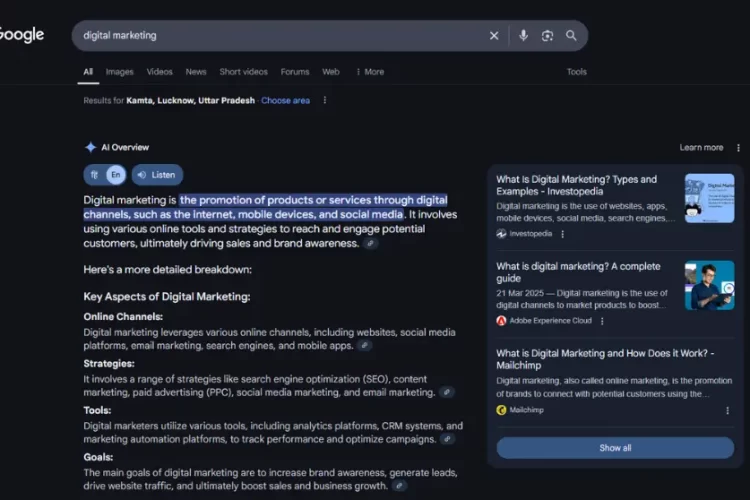
Social media has become an indispensable tool for creative marketing agency to connect with their audience, build brand awareness, and drive engagement. However, measuring the return on investment (ROI) of social media marketing efforts can be challenging. In this blog, we will know the various metrics and measurement methods used to evaluate the effectiveness of social media marketing campaigns.
Setting Clear Goals
Before you start measuring anything, you need to know what you want to achieve. Decide what’s important for your business, like getting more customers, making more sales, or just getting people to know about your brand.
Key Metrics for Social Media ROI
- Engagement Metrics
Engagement metrics measure how audiences interact with your content on social media platforms. These include likes, comments, shares, retweets, and click-through rates (CTRs). High engagement indicates that your content resonates with your audience and can contribute to brand awareness and loyalty.
- Reach and Impressions
Reach refers to the total number of unique users who see your social media content, while impressions represent the total number of times your content is displayed. Tracking reach and impressions provides insights into the size and impact of your audience, helping gauge brand visibility and exposure.
- Conversion Rate
Conversion rate measures the percentage of users who take a desired action, such as making a purchase, signing up for a newsletter, or downloading a resource, after interacting with your social media content. Calculating conversion rate helps assess the effectiveness of your social media marketing in driving tangible business outcomes.
- Return on Ad Spend (ROAS)
For paid social media advertising campaigns, ROAS measures the revenue generated relative to the amount spent on ads. By comparing ad spend to revenue generated, businesses can determine the profitability of their advertising efforts and optimize future ad investments accordingly.
- Customer Lifetime Value (CLV)
CLV represents the total revenue a customer is expected to generate over their entire relationship with a business. Tracking CLV allows businesses to assess the long-term impact of social media marketing on customer acquisition and retention, helping prioritize high-value audience segments.
Tools to Help Measure
Luckily, there are lots of tools out there to help you figure out if your social media is working:
Social media apps: Facebook, Twitter, and others have their own tools to show you how your posts are doing.
Google Analytics: This helps you see how many people are coming to your website from social media.
UTM parameters: These fancy things let you track where people are coming from when they click on your links.
Social listening tools: These tools help you see what people are saying about your brand on social media.
Testing Different Things
Sometimes you need to try different stuff to see what works best. Here’s how you can do that:
- A/B testing: This means trying out different versions of your posts or ads to see which one gets better results.
- Trying different times: Maybe your audience is more active at different times of the day. Test out posting at different times to see what works best.
- Changing up your content: Don’t be afraid to try new things! Maybe your audience likes videos more than pictures, or maybe they prefer funny posts over serious ones.
Monitoring Trends and Competitors
Keep an eye on what’s happening in your industry and what your competitors are doing on social media. This can give you ideas for new content or strategies to try out.
- Engaging with Your Audience
Respond to comments, messages, and mentions on social media. Building a relationship with your audience can help increase loyalty and drive more engagement.
- Tracking Customer Feedback and Sentiment
Pay attention to what people are saying about your brand on social media. Positive feedback can reinforce your marketing efforts, while negative feedback can help you identify areas for improvement.
Conclusion
Evaluating the ROI of social media marketing requires a strategic approach and the use of appropriate metrics and measurement methods. By defining clear goals and objectives, tracking key metrics such as engagement, reach, conversion rate, ROAS, and CLV, and leveraging tools like social media analytics, Google Analytics, UTM parameters, social listening, and A/B testing, businesses can gain valuable insights into the effectiveness of their social media marketing efforts and make data-driven decisions to optimize their strategy for success.
Checking if your social media is helping your business doesn’t have to be hard. Just set clear goals, keep an eye on simple metrics, use the right tools, and don’t be afraid to try new things. With a little effort, you can make sure your social media is working for you!


